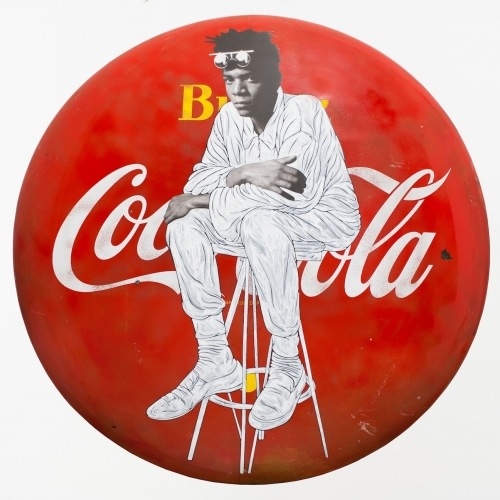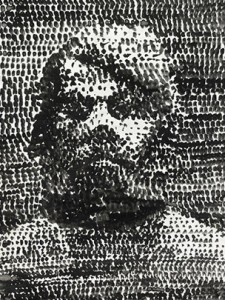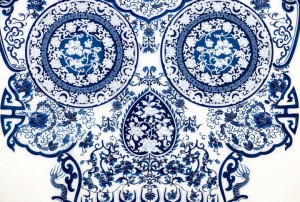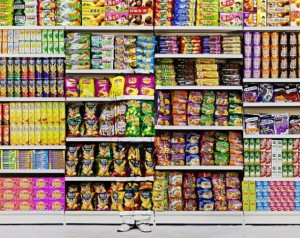
“Pop Art looks out into the world. It doesn?t look like a painting of something, it looks like the thing itself.” Roy Lichtenstein
22nd February – 6th April 2013 scream 27 – 28 Eastcastle Street London W1W 8DH
This will be Pakpoom Silaphan?s third solo exhibition at the gallery, Empire State. Silaphan?s practice examines notions of globalisation, mass consumerism and the universal reach of cultural icons across the world. Primarily using found-objects such as old metal advertising signs collected during his years living in Thailand, and showing a new body of sculptures made with vintage wooden Pepsi and Coca-Cola crates, reminiscent of Warhol?s Brillo Box installations; Silaphan re-works these objects to create a fresh interpretation of Pop Art and opens a discourse on the effects of advertising and mass consumption.
The infiltration of western imagery and ideology had a profound influence on Silaphan?s understanding of the West and on his artistic practice. Using his favoured artistic icons, such as Warhol, Picasso and Frida Khalo, he collages and paints over these branded advertising signs and crates, implying the artists? identity as a recognised global brand itself. Silaphan creates an engaging dialogue between the relationship between East and West, and the universal language of signs and symbols that is accessible to all and has been imprinted on to the universal collective consciousness.
The Everybody Project is a new body of work where Silaphan creates large grids reminiscent of periodic tables or world maps. The charts are populated with multiple, small found images of faces from the vast pool of every day mass media, including celebrities, politicians, cartoons and sports people. Each of them is painted over with another symbol or iconic global reference, these range from Mickey Mouse ears, Batman masks, Warhol fright-wigs, or Basquiat’s spiky hair style. This is one of the side-effects of globalisation; images or concepts can often become lost in translation, or begin to take on additional or different perspectives.
In works such as ?Three Times Warhol on White Coke Button? and ?Dali Sits on Triple Pepsi? we see a further development in Silaphan?s signature advertising sign works. Sourcing vintage metal advertising signs of soda brands such as Coca-Cola, Pepsi and Fanta, Silaphan re-works these signs with collage and paint to incorporate the figures of his revered artists. This series highlights the artists? global profile and elevates the status of these brands into high-art, with this cultural juxtaposition. These signs clearly show signs of rust, discolouration and age that become almost sculptural and imply the passing of time and the history of advertising and its global reach.
The Identified Flying Object is a clever appropriation of Lichtenstein?s iconic painting ?Whaam!” from 1963. Silaphan presents a two metre high aluminium ?paper? aeroplane that appears to have been made from Lichtenstein?s dynamic work. This sculpture is a beautiful realisation of Lichtestein?s desire to integrate life and art and continues Silaphan?s investigation into cultural symbology and its democratic reach.
Since the 1960s, artists such as Warhol and Lichtenstein used brands, comics and elements of the mass media to remove the formal artistic boundaries of what was considered Art and made it democratic, relevant and accessible to all. In an age of “multinational capitalism”, Silaphan?s ?neo-pop? pushes these ideas further by creating a new Pop vernacular, using the icons and imagery of his predecessors and the tradition of the ready-made. Jean Wainwright comments, “we have the canon of art history literally repositioned on obsolete advertising signs, provoking the double recognition of brand on brand, the shared global language and the currency of art”.
Read FADs Interview with Pakpoom: Interview







